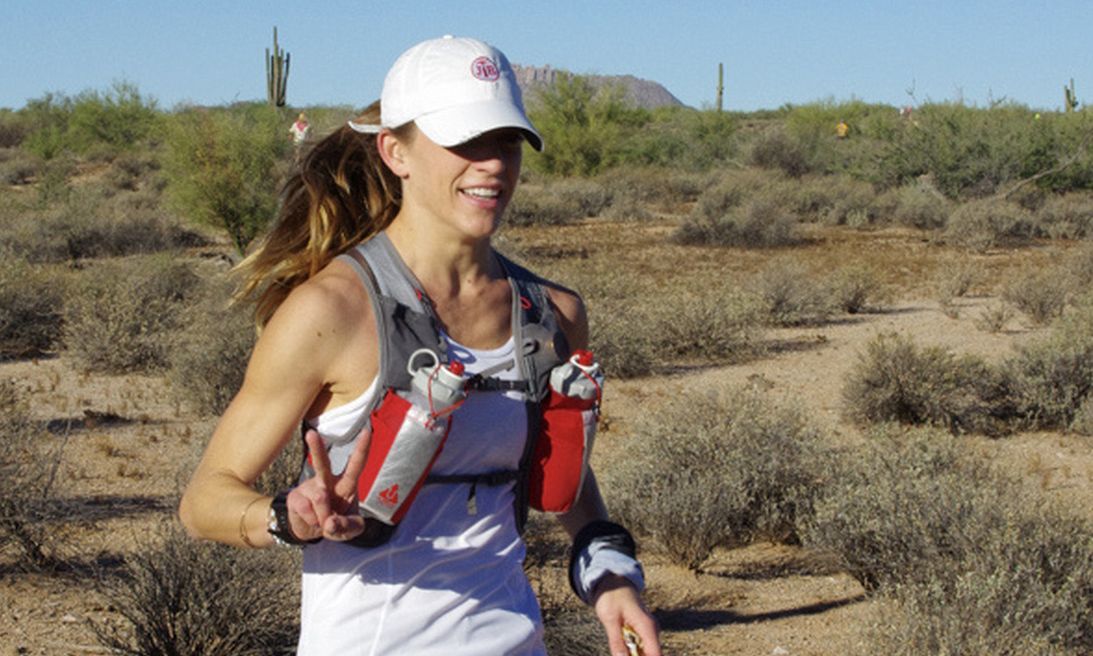The general rule of thumb is to train on the terrain and in race conditions you’re going to race in, but that can be quite challenging or seem near impossible while living in the concrete jungle and training for a trail race. I have been (affectionately) called a “roadie” and “flatlander” at some of my trail races, which is fair, but there are some exercises, drills and workouts you can incorporate into your city streets training for a trail race.
Trail running is a different beast than road running and should be respected that way; otherwise, you’ll find yourself leaving your first trail run with sore ankles, bloody toes and utterly exhausted. Well, I suppose that happens to seasoned trail runners as well, but it doesn’t have to be that way!
Trail running requires the use of different muscles, stability and agility in ways you don’t normally tap into on the pavement. On your next run, try to find a set of stairs or a park bench for the following plyometric drills- single leg step-ups and double leg box jumps.
Single Leg Step-Ups
How to: Find a set of stairs, park bench or bleachers. Step up onto the first step with your left foot. Drive the right knee up (and left arm up in an exaggerated running form). Add a hop/pop up at the top landing back on your left left foot. Step down with your right foot.
(Repeat 10 times each leg)
Benefits: Single leg exercises help improve your knee and hip stability while also activating your core for additional balance. The pop up at the top starts to tap into some explosive power.
Double leg box jump
How to: On the same set of stairs, bleacher or park bench, start with feet hip distance apart. Lower your legs, drive your arms and hop up onto the platform. Stick the landing, landing on the balls of your feet. Step or hop back down. (Repeat 10 times)
Benefits: Now we’re working on leg strength and explosiveness, which is critical for charging uphills and maneuvering around more technical trails with rocks and roots.
Some additional single leg stability exercises you can perform on your own are single leg Romanian dead lifts, and 3-dimensional lunges. Yes, the first one will activate your glutes and rock your world, but will also activate your arch for good foot and ankle stability making you more agile and able to dance around the unpredictable trail terrain. I find that ankle stability is the number one most needed and often neglected strength essential for trail running.
Once you’re out on the trails, you’ll undoubtedly hit some hills (or mountains). Bounding drills and simply integrating uphill repeats in your training will help prepare you for those steep climbs on the trail. It might be the former triple jumper in me, but bounding drills are my favorite, more high-intensity explosive exercise. Think of the bounds as an exaggerated running motion with a focus on the powerful and explosive push-off. Start off in a jog and gradually start to drive the front knee higher and push off the back foot more powerfully. The focus should be on hang time as if you’re pausing for a moment mid-air. This drill should only be performed for about 50 meters (half the length of a straight-away on the track) starting off with 2 sets and building up to 4 or 5 sets.
Last, but certainly not least… Hills! Hills! And more hills! In New York City, we don’t have the luxury of waking up and rolling out of bed into the mountains, but Central Park, Prospect Park and any bridge repeats offer plenty opportunities for hill training. I know they’re difficult, but avoiding hills will make for a less enjoyable trail run or race. In addition to developing more power, working on your speed, and strengthening your calves, glutes, hamstrings and quads, uphill work is also low impact in nature and thus maximum benefit with minimal stress on the joints. Be sure to include both short, quick hill repeats on your speed training days and also long, sustained hills within your long runs.
If you’re reading this, you’re already interested in trail running or registered for a trail race, so I don’t need to convince you of why trail running is good for you (it’s rebellious, personal, lower impact, potentially spiritual, and just downright badass). And the only way to get better at something is to do that thing, so I do suggest trying to hit some trails prior to your trail race. Keep an eye out for day trips organized by Mile High Run Club as a chance to escape the city and explore the trails. Happy trail running!

